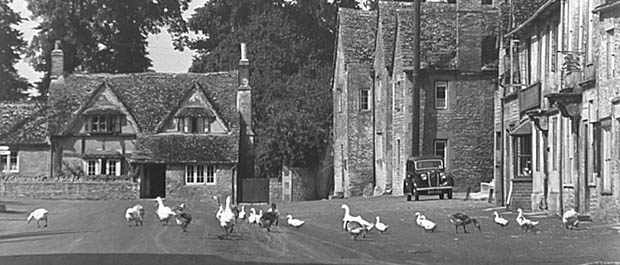Stonehenge

A series of then and now photographs of Lacock during the 1940s and today will be on display this bank holiday weekend as part of a lottery funded project.
Wiltshire and Swindon History Centre digitised around 80 photographs depicting the Wiltshire village in the Second World War. The fascinating insight into Lacock will now be part of this year’s annual exhibition by the Lacock Positive Camera Club.
Inspired by the scenes of the village taken by photographer Harold White during the Second World War, club members David Sage and Bob Bray set out to produce similar images of the village as it is today.
Their photographs can be seen alongside the 1940’s views of Lacock at the exhibition which is open to the public on Sunday 1 and Monday 2 May, 10am – 5pm, at Lacock Village Hall and Manor Room. Entry is free.
The Camera Club linked up with Wiltshire and Swindon History Centre to help digitise the 1940s photographs as part of the Lacock Unlocked Heritage Lottery Fund project.
The £500k funding is designed to bring communities together and inspire participation in heritage activities.
The exhibition is accompanied by a book containing a selection of the images and the memories of villagers that have been collected by the history centre in partnership with the local community.
Stuart Wheeler, cabinet member for heritage and arts said: “The Lacock Unlocked project demonstrates how Wiltshire Council, through the history centre, is supporting local communities and individuals to volunteer and get involved in a wide range of local heritage activities.
“I am delighted people will have an opportunity see some of the wonderful work the Lacock Positive Camera Club has produced.”
A publication to go with the exhibition, titled Lacock – A Changing Village, is available for £5 and will be on sale at the exhibition and at various places around the village and the history centre.
Lacock Unlocked is a £500,000 project funded by the Heritage Lottery Fund to purchase the unique and nationally important Lacock Archive and to provide activities for the community to access and add to it.
This includes an online community archive, a location app for Lacock village, exhibitions and family learning events that included recreating old food recipes, photography, creative writing and researching the archive. More than 100 community volunteers have provided more than 11,000 hours of their time to help sort, catalogue and conserve the archive, and create content for the website www.wshc.eu/lacock